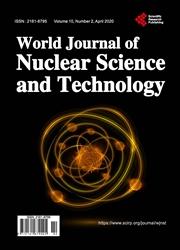Brownian Motion of Radioactive Particles: Derivation and Monte Carlo Test of Spatial and Temporal Distributions
引用次数: 3
Abstract
Stochastic processes such as diffusion can be analyzed by means of a partial differential equation of the Fokker-Planck type (FPE), which yields a transition probability density, or by a stochastic differential equation of the Langevin type (LE), which yields the time evolution of a statistical process variable. Provided the stochastic process is continuous and certain boundary conditions are met, the two approaches yield equivalent information. However, Brownian motion of radioactively decaying particles is not a continuous process because the Brownian trajectories abruptly terminate when the particle decays. Recent analysis of the Brownian motion of decaying particles by both approaches has led to different mean-square displacements. In this paper, we demonstrate the complete equivalence of the two approaches by 1) showing quantitatively and operationally how the probability densities and statistical moments predicted by the FPE and LE relate to one another, 2) verifying that both approaches lead to identical statistical moments at all orders, and 3) confirming that the analytical solution to the FPE accurately describes the Brownian trajectories obtained by Monte Carlo simulations based on the LE. The analysis in this paper addresses both the spatial distribution of the particles (i.e. the question of displacement as a function of diffusion time) and the temporal distribution (i.e. the question of first-passage time to fixed absorbing boundaries).放射性粒子的布朗运动:时空分布的推导和蒙特卡罗检验
扩散等随机过程可以通过福克-普朗克型偏微分方程(FPE)或朗之万型随机微分方程(LE)进行分析,前者产生跃迁概率密度,后者产生统计过程变量的时间演化。假设随机过程是连续的,并且满足一定的边界条件,这两种方法产生了等价的信息。然而,放射性衰变粒子的布朗运动不是一个连续的过程,因为当粒子衰变时,布朗轨迹突然终止。最近通过这两种方法对衰变粒子的布朗运动进行的分析导致了不同的均方位移。在本文中,我们通过以下方式证明了这两种方法的完全等价性:1)在数量上和操作上显示了FPE和LE预测的概率密度和统计矩是如何相互关联的,以及3)确认FPE的解析解准确地描述了通过基于LE的蒙特卡罗模拟获得的布朗轨迹。本文中的分析既涉及颗粒的空间分布(即位移作为扩散时间的函数的问题),也涉及时间分布(即首次通过固定吸收边界的时间问题)。
本文章由计算机程序翻译,如有差异,请以英文原文为准。
求助全文
约1分钟内获得全文
求助全文

 求助内容:
求助内容: 应助结果提醒方式:
应助结果提醒方式:


